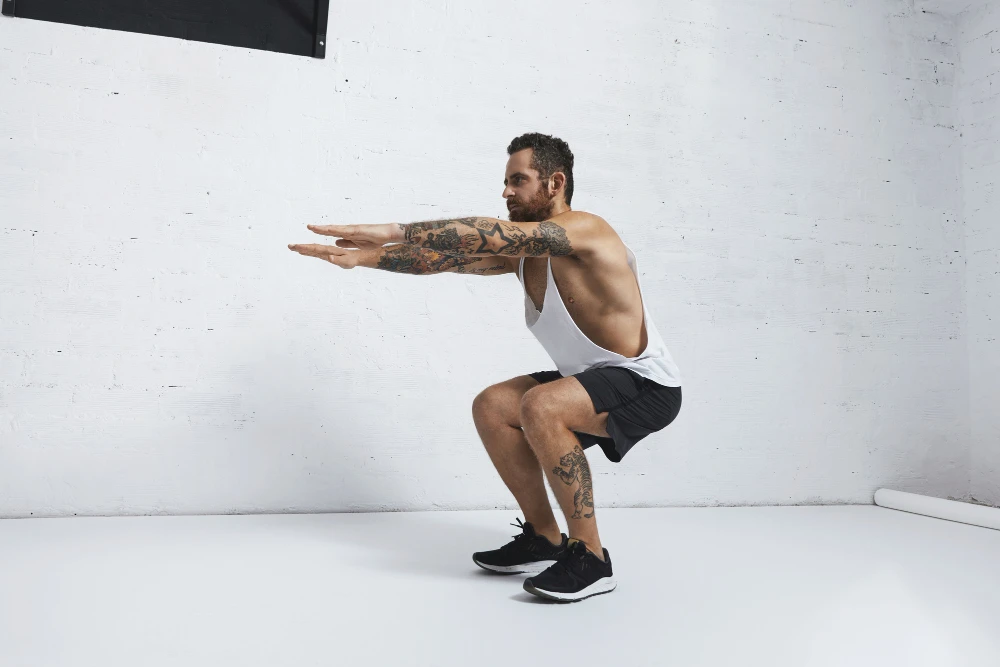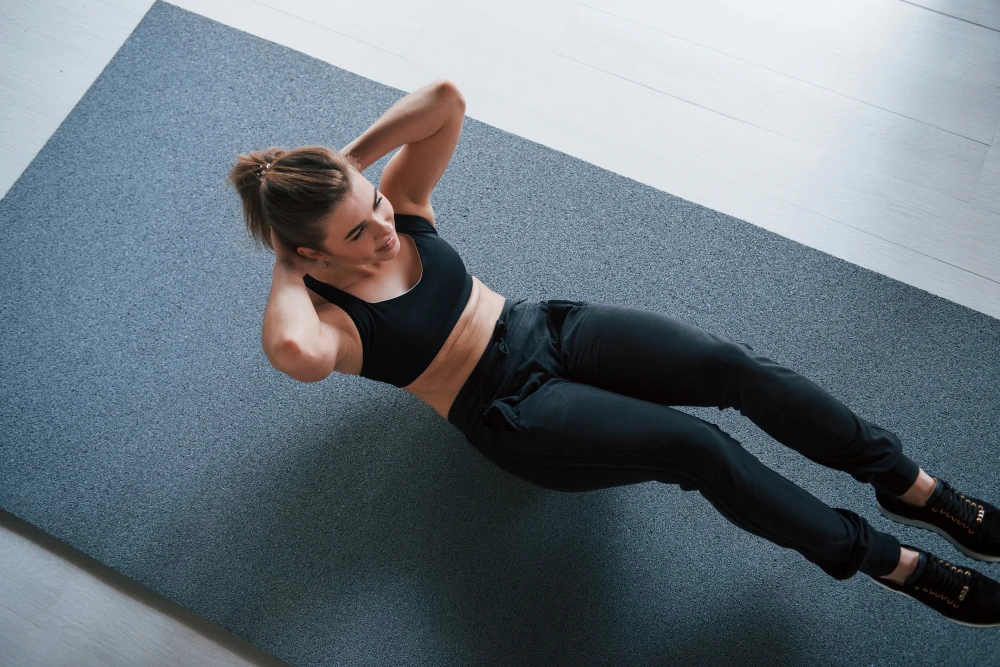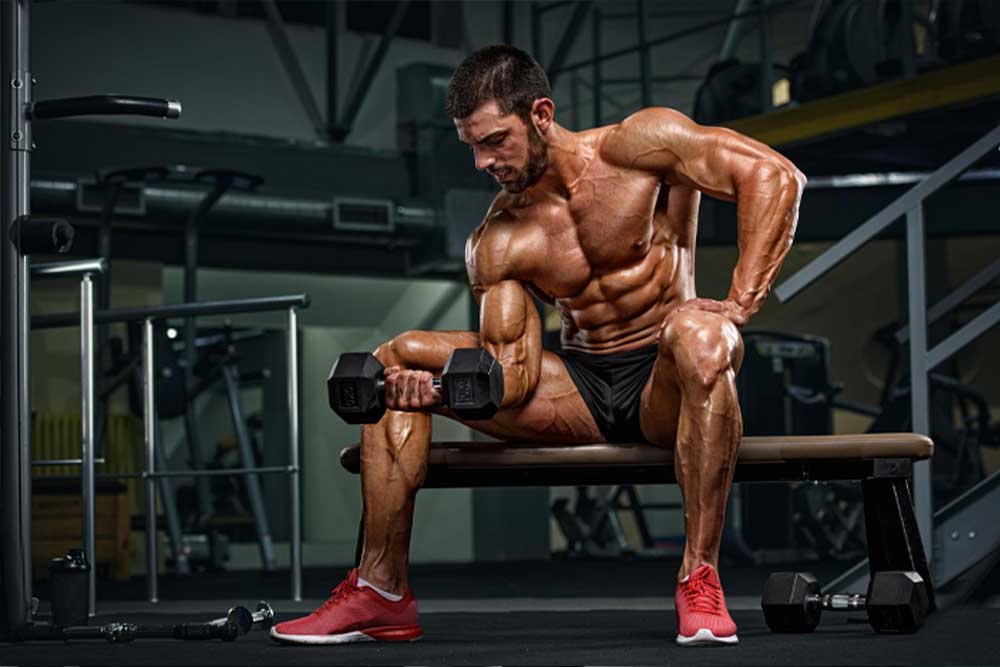Are you looking to build your muscles and achieve your fitness goals? If yes, then you might have heard about isolation exercises.
In this blog, we’ll explore what isolation exercises are and how they differ from compound exercises. We will also look at the advantages of isolation exercises for muscle development, including improving muscle conditioning, fixing muscle imbalances, and working around injuries.
We will dive into different types of isolation exercises for the upper body, lower body, and core. Additionally, we’ll explain how to incorporate nutrition and endurance training into your routine for maximum results.
Whether you are a beginner or an experienced bodybuilder, this guide will help you understand everything you need to know about isolation exercises.
Isolation Exercises: What Are They?
Isolation exercises focus on individual muscles or groups to correct imbalances and strengthen weaker areas. Bicep curls, tricep extensions, and leg curls are examples. It’s best to use them in combination with compound exercises for overall muscle development.
Isolation vs Compound Exercises: Which is Better?
When it comes to workouts, both isolation and compound exercises have their benefits. Isolation exercises are great for targeting specific muscles and correcting imbalances, while compound exercises engage multiple muscles and can promote overall strength and functional movement. A balanced workout routine should include a variety of both types of exercises.
Benefits of Isolation Exercises for Muscle Development
- Improving Muscle Conditioning with Isolation Exercises
Isolation exercises are an excellent way to improve muscle conditioning by targeting specific muscles with isolation movements. By using good form and full range of motion during these exercises, you can correct muscle imbalances and increase muscle hypertrophy by targeting specific muscle fibers. When combined with compound movements in a comprehensive workout routine, isolation exercises can help create a more well-rounded training program for optimal results.
- Fixing Muscle Imbalances with Isolation Exercises
When it comes to fixing muscle imbalances, isolation exercises are a great way to make progress. Rather than relying solely on compound movements like squats or bench presses, which work multiple muscle groups at once, isolation exercises allow you to target specific muscle groups with good form and range of motion. This means that you can strengthen areas like your hamstrings or triceps without putting too much strain on other muscles in your body. By incorporating isolation exercises like calf raises and triceps extensions into your training program, you’ll see improvements in your physique and muscle strength over time.
- Working Around Injuries with Isolation Exercises
If you’re dealing with an injury, consider isolation exercises as a way to target specific muscle groups without worsening the problem. With good form and technique, these movements can improve overall strength and symmetry while reducing the risk of further injury. Before starting any new workout program that incorporates isolation movements, consult with a personal trainer or physical therapist for guidance that can help you achieve your goals safely and effectively.
- Reducing Total Duration of Workouts with Isolation Exercises
Incorporating isolation exercises into your training program can be a great way to reduce the total duration of your workout. By targeting specific muscle groups, you can create a more balanced physique and prevent muscle imbalances while improving hypertrophy. Isolation movements such as dumbbell fly or lateral raises are good options since they allow for a full range of motion in a specific muscle group without involving other muscles. Always make sure to use good form when performing isolation movements, especially if you’re a beginner.

Isolation Exercises for Upper Body
- Biceps: Best Isolation Exercises
To optimize muscle growth in your biceps, it’s essential to incorporate isolation exercises into your workout routine. Dumbbell curls are a classic exercise that can be done standing or seated and help target both the short and long head of the biceps. Hammer curls work on both your biceps and forearms while also improving grip strength. Concentration curls help isolate the biceps muscle by taking away any momentum generated by other muscles.
Including these isolation movements in your training program helps you develop strength in specific muscle groups without involving compound movements that may activate multiple areas at once.
- Triceps: Best Isolation Exercises
Targeting the triceps with isolation exercises can enhance muscle development. Tricep pushdowns, skull crushers, and overhead tricep extensions are some of the most effective isolation movements for this specific muscle group. Proper form and technique should be maintained to avoid any risk of injury while performing these exercises in your strength training program. By incorporating these isolation movements into your workout routine, you can achieve noticeable hypertrophy in your arms.
- Lateral Raises: Best Isolation Exercises
To improve your overall aesthetic appearance, enhance your posture, and build shoulder strength, incorporate lateral raises into your workout routine. This isolation exercise targets the deltoid muscles in your shoulders using dumbbells or resistance bands to modify intensity. Performing lateral raises with good form using moderate weights avoids injury while providing maximum results. Don’t forget to modify by targeting different parts of your shoulder muscles for hypertrophy and development.
- Pull-Ups and Kickbacks: Best Isolation Exercises
For optimizing muscle development with isolation exercises, incorporating pull-ups and kickbacks into your workout routine is a great way to target specific muscle groups. Pull-ups help in building back muscles, particularly the latissimus dorsi, while kickbacks are excellent at working out triceps muscles in your upper arms. By maintaining good form and technique while performing these isolation movements, you can avoid injury and start seeing hypertrophy in targeted muscles. To maximize results, try combining these exercises with compound movements like squats or deadlifts as part of your strength training or weight loss program.

Isolation Exercises for Lower Body
- Squatting: Best Isolation Exercises for Quads
For optimal muscle development of your quadriceps, consider adding squatting to your isolation movements. Squatting is a great way to isolate your quad muscles without engaging other muscle groups too much. By adjusting your foot placement and depth of squat, you can easily target specific muscle groups within your quads. Front squats are another effective variation that places more emphasis on the quads than traditional back squats.
- Hamstring Curls and Deadlifts: Best Isolation Exercises
Incorporating hamstring curls and deadlifts into your isolation movements is a great way to target specific muscle groups for optimum hypertrophy. By adjusting the range of motion and weight used for both exercises, you can focus on both the hamstrings and glutes simultaneously without starting with the primary keyterm ‘isolation exercises.’ Maintaining good form during these multi-joint compound movements will ensure maximum muscle growth and strength training. Remember to include them in your workout program alongside other compound movements for balanced muscle development.
- Lunges and Kickbacks: Best Isolation Exercises for Glutes
Incorporating isolation movements like lunges and kickbacks into your workout program is a great way to target specific muscle groups for optimal muscle growth. These exercises are effective at isolating the glutes while also engaging the core muscles. By maintaining good form and gradually increasing resistance or weight over time, you can achieve hypertrophy and maximize muscle growth. Ensure that lunges and kickbacks are a part of your strength training or endurance training program, which will help prevent muscle imbalances.
- Calf Raises and Incline Curls: Best Isolation Exercises
Isolation movements like calf raises and incline curls are important for developing specific muscle groups like the calves and biceps respectively. For calf raises, one must focus on using good form, avoiding bouncing at the bottom of the movement, and adding resistance over time. Incline curls help target the biceps; it is crucial to maintain proper elbow position while performing this exercise to ensure maximum hypertrophy. Incorporating these exercises into your training program can help you achieve greater muscle growth without increasing calories.

Isolation Exercises for Core
- Crunches and Leg Raises: Best Isolation Exercises for Abs
Two of the best isolation exercises for targeting the abs are crunches and leg raises. For performing crunches, lie on your back with knees bent and feet flat on the ground while placing hands behind head to lift shoulders off the ground. Leg raises target lower abs and can be done by lying down straight with legs up in air and lowering them towards the ground without touching it before raising them again. Adding these exercises to an exercise routine can help in muscle conditioning and development.
- Forearm Curls and Planks: Best Isolation Exercises for Core Strength
Two highly effective isolation exercises for developing core strength are forearm curls and planks. Forearm curls target the forearm muscles which play an important role in grip strength and upper-body stabilization while planks engage multiple core muscles such as rectus abdominis, obliques, and lower back muscles. The key is to maintain proper form during these movements. Incorporating these isolation exercises into your training program can lead to muscle hypertrophy while minimizing muscle imbalance.
Nutrition for Isolation Exercises
Isolation exercises are a type of strength training that focuses on one muscle group at a time. They can be helpful for building muscle definition and improving strength. However, in order to see results from isolation exercises, it is important to follow a proper nutrition plan.
Here are some tips for nutrition for isolation exercises:
- Eat a high-protein diet. Protein is essential for muscle growth and repair. Aim to eat 1-1.5 grams of protein per pound of body weight each day.
- Eat plenty of complex carbohydrates. Complex carbohydrates provide energy for your workouts and help to prevent muscle breakdown. Good sources of complex carbohydrates include whole grains, fruits, and vegetables.
- Eat healthy fats. Healthy fats are essential for hormone production and cell growth. Good sources of healthy fats include avocados, nuts, and seeds.
- Stay hydrated. Hydration is important for muscle function and recovery. Aim to drink 8-10 glasses of water each day.
In addition to following a healthy diet, it is also important to get enough sleep. Sleep is essential for muscle growth and repair. Aim for 7-8 hours of sleep each night.
By following these tips, you can maximize the benefits of isolation exercises and improve your overall health and fitness.
Here are some specific foods that are good for nutrition for isolation exercises:
- Lean protein sources: chicken, fish, tofu, beans, eggs
- Complex carbohydrates: brown rice, quinoa, sweet potatoes, whole-wheat bread
- Healthy fats: avocados, nuts, seeds
- Fruits and vegetables: all fruits and vegetables are good for you, but some that are particularly good for muscle growth include bananas, berries, spinach, and kale
- Water: drink plenty of water throughout the day, especially before, during, and after workouts
It is also important to avoid processed foods, sugary drinks, and excessive amounts of saturated and unhealthy fats. These foods can sabotage your efforts to build muscle and improve your fitness.
By following a healthy diet and getting enough sleep, you can maximize the benefits of isolation exercises and achieve your fitness goals.
Best Ways to Incorporate Isolation Exercises for Endurance
For maximal endurance during your training program, begin by identifying which specific muscle group requires targeting. Then work in isolation movements such as lateral raises for your deltoids, hamstring curls and Romanian deadlifts for your hamstrings and calf raises for your calves. Maintain control over the weight lifted throughout all rep ranges and consider integrating cardio into this routine alongside other excellent multi-joint compound movements.
Let’s Sum Up
In conclusion, isolation exercises are a valuable tool for anyone looking to improve their muscle development and conditioning. They allow you to target specific muscle groups that may be lagging behind or need extra attention. Whether you’re a bodybuilder, athlete, or just looking to improve your overall fitness, incorporating isolation exercises into your routine can help take your gains to the next level. Remember to focus on proper nutrition and endurance training as well, as they play an important role in maximizing your muscle development potential. If you’re new to isolation exercises, start with our beginner’s guide and gradually work your way up. Whatever your fitness goals may be, incorporating isolation exercises into your routine can only help you achieve them more effectively.
Share this blog with someone who might find it helpful in their fitness journey.



